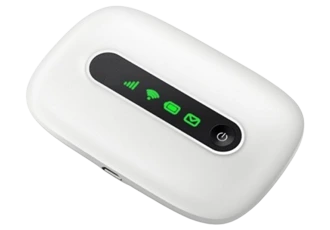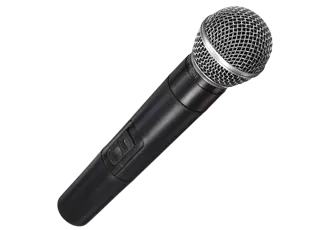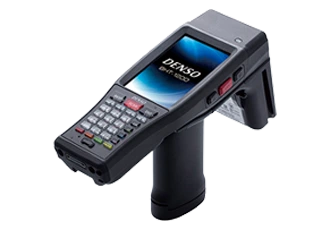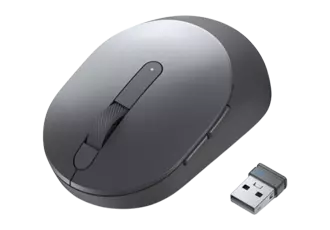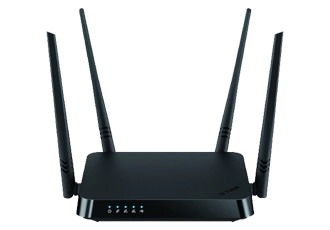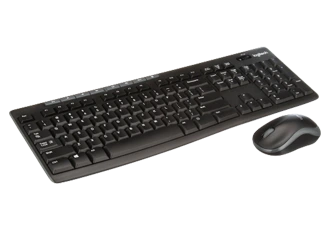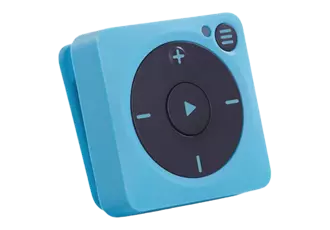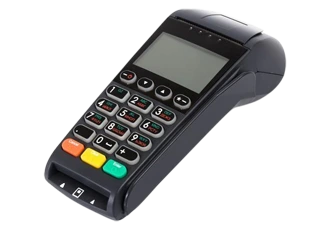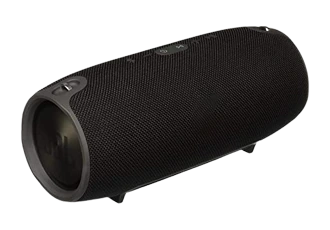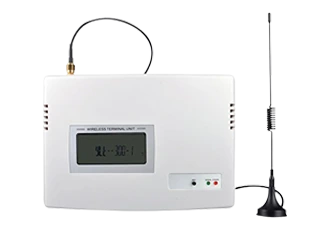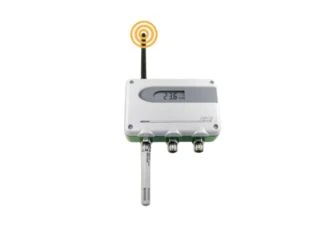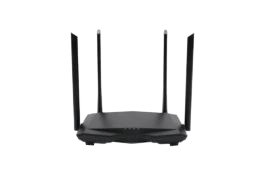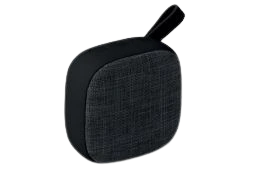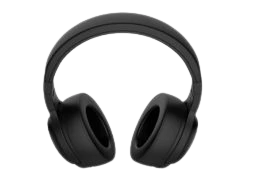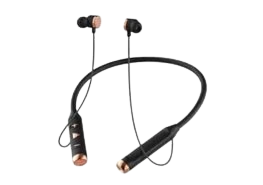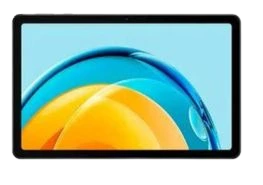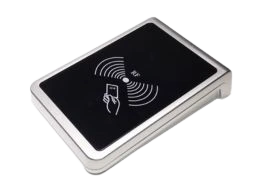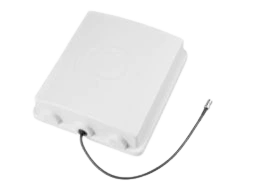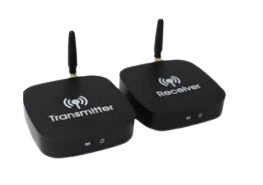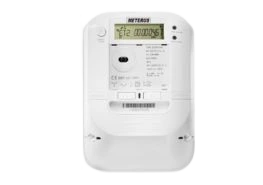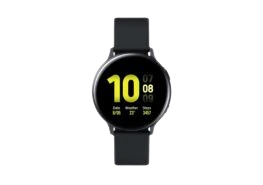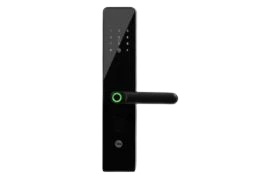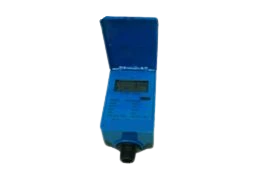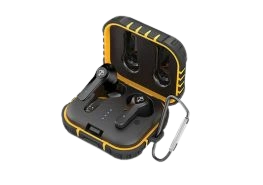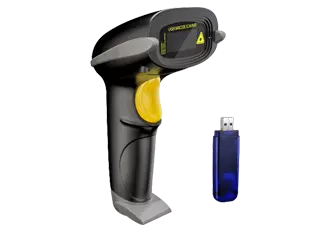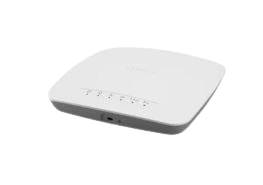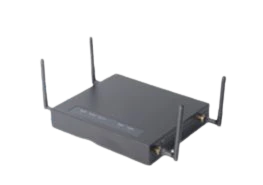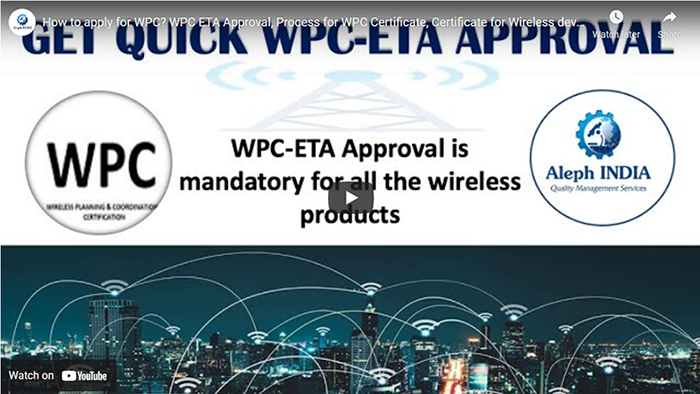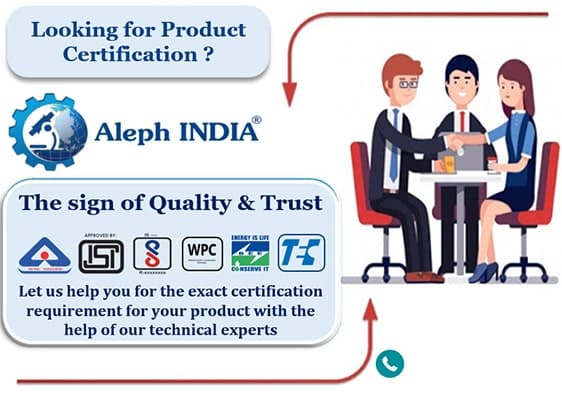- HOME
- ABOUT US
- SERVICES
-
LICENCE & CERTIFICATION
- BIS (ISI MARK) FOR FOREIGN MANUFACTURERS
- DOMESTIC PRODUCT CERTIFICATION (ISI MARK)
- BIS SCHEME X CERTIFICATION
- BIS CERTIFICATE OF CONFORMITY (CoC)
- BIS HALLMARKING
- REACH CERTIFICATION (GLOBAL)
- LABORATORY RECOGNITION SCHEME (LRS)
- WORLD MANUFACTURER IDENTIFIER (WMI) CODE
- ECO MARK
- TAC APPROVAL FOR AUTOMOBILE
- PESO CERTIFICATION
- SASO CERTIFICATION
- CDSCO CERTIFICATION
-
REGISTRATION
- BIS (CRS) REGISTRATION FOR ELECTRONIC PRODUCT
- WPC-ETA APPROVAL
- BEE CERTIFICATION
- E-WASTE MANAGEMENT (EPR)
- EPR REGISTRATION FOR PLASTIC WASTE MANAGEMENT
- EPR REGISTRATION FOR BATTERY WASTE MANAGEMENT
- EPR REGISTRATION FOR USED OIL
- LEGAL METROLOGY (LMPC)
- TEC/MTCTE APPROVAL
- CE CERTIFICATION
- UL CERTIFICATION
- ROHS LICENCE
- DRONE REGISTRATION
- MOEF LICENCE
-
AUXILIARY
- STANDARDIZATION (SCIENTIFIC) DIVISION
- TRAINING SERVICES (NATIONAL & INTERNATIONAL)
- IMPORT/EXPORT LICENCE
- FSSAI CERTIFICATION
- MSME/SSI/NSIC REGISTRATION
- ISO REGISTRATION
- BRAND REPRESENTATION
- LABORATORY EQUIPMENT AND SETUP
- TRADEMARK REGISTRATION
- MAKE IN INDIA SUPPORT
- AG-MARK LICENCE
- THIRD PARTY INSPECTION AND MONITORING SERVICES
-
- PORTFOLIO
- UPDATES
- CONTACT
- LOGIN

WIRELESS PLANNING AND COORDINATION (WPC) ETA APPROVAL
[ Table Of Content ]
- What is WPC Approval in India?
- What is WPC ETA Certification?
- Types of WPC approval
- Basic requirement for WPC ETA approval and import licence
- Documents required for WPC licence
- What is RF (radio frequency) test report, and how to get RF test report?
- Process to obtain Equipment Type Approval (ETA) from WPC
- Products under WPC
- Product scope
- De-Licenced Frequency Band
- How to get WPC ETA approval in india?
- Frequently Asked Questions (FAQ)
What is WPC Approval in India?
The commonly used term for Equipment Type Approval (ETA) is WPC Approval. The primary objective behind the implementation of the Indian WPC certification was to safeguard consumer rights while simultaneously providing a licensing framework for radio operations. WPC, an abbreviation for Wireless Planning & Coordination, represents the national authority responsible for broadcasting in India and operates under the jurisdiction of the Ministry of Communications and Information Technology. Having been founded in 1952, its central office is situated in New Delhi, complemented by regional branches located in Mumbai, Chennai, Kolkata, and Guwahati.
WPC ETA Approval: The full form of WPC is Wireless Planning and Coordination. The Wireless Planning and Coordination Wing (WPC) of the Department of Telecommunications (DoT) is the National Radio Regulatory Authority responsible for frequency spectrum management and licensing, as well as meeting the needs of all wireless users.
WPC office issue WPC ETA License for IT and Electronic devices that meet the demands of wireless technology users. Only WPC-approved wireless and Bluetooth IT and electronic items that operate on unlicensed frequency bands and meet human safety regulations are allowed to be sold in India.
Embrace WPC Approval, a gateway to connectivity;
Ensure compliance, for seamless communication and unity;
Empower your devices, with the mark of regulatory acceptance with grace;
And let WPC Approval be the catalyst, propelling your technology's embrace."
All manufacturers, importers, traders, and suppliers must fulfill compliance and regulatory requirements of the WPC certificate/ETA certificate. To understand the WPC Certification (ETA certificate) requirements and procedure for a WPC license for Bluetooth and Wi-Fi-enabled devices, let's take a closer look at WPC Approval in India.
What is WPC ETA CERTIFICATION?
The WPC (Wireless Planning & Coordination) wing, which is part of the Ministry of Communications and Information Technology, is the national broadcasting body founded in 1952 and now being operated by Saral Sanchar Online Portal.
Products with radio and/or wireless functionalities imported or manufactured and marketed in India will need to have an equipment type approval certificate (ETA certificate) from the Wireless Planning and Coordination (WPC India) wing of the Ministry of Communications of the government of India. This includes products with Bluetooth, wireless local area network access technology (Wi-Fi), small digital radios (Zigbee), and radio frequency identification (RFID), and many more.
A WPC certificate is required for anyone who wants to do a wireless device business in India. Manufacturers and importers of Bluetooth and Wi-Fi-enabled devices must receive WPC license (ETA certificate) from Wireless Planning & Coordination wing, India.
LICENCE PROVIDED BY WPC - AUTHORITY
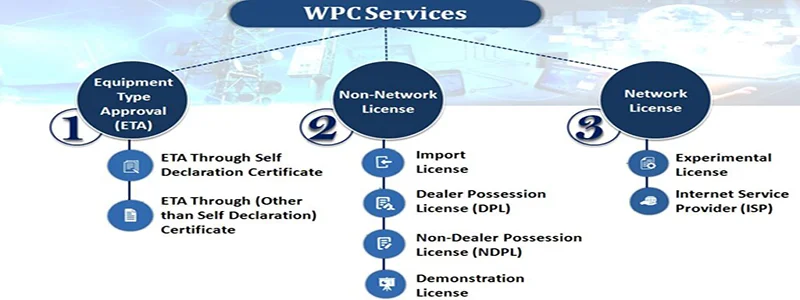
TYPES OF WPC APPROVAL/ WPC certification
Wireless Planning and Coordination certification (WPC certification) is of 3 types which are as follows:
- Non - Network Licence
- Import Licence
- Dealer Possession Licence
- Non-dealer Possession Licence
- Network Licence
- Internet Service Provider Licence (ISP)
- Experimental Licence
- Equipment type Approval (ETA)
- Non - Network Licence -
This license is issued to non-network service providers like cable TV distributors and wireless products. This license is required to sell, purchase, and import specific wireless equipment. If you're an incorporated business entity with the appropriate people for your equipment or operation, the WPC will only award you a non-network license. It is of 3 types:
- Import Licence - Import Licence is issued to export wireless products to India. The holder of this license gets permission to sell his wireless products in the Indian Territory.
- Dealer possession Licence - WPC issues a Dealer Possession Licence to an individual/organization who is the dealer and distributor of wireless products.
- WPC issues a non-Dealer Possession Licence to an individual/organization that does not deal with wireless devices and does not hold any license from WPC.
- Network Licence -
A network license is given to a company that wants to use the country's restricted radio frequency capacity to provide communication services, including mobile networks, cable, and DTH.
- Internet Service Provider Licence (ISP) - AAny organization that wants to provide internet services must obtain ISP Licence from Telecommunication Department (DoT).
- Experimental Licence - Any organization or person who wants to conduct experiments or research on wireless gadgets must obtain an experimental license from WPC Department.
- Equipment type Approval & WPC ETA Certificate -
While importing a product from overseas, a question should always be in our mind. What are the compliances required for my product? Especially when it is a Bluetooth device or RF ID-based equipment, ensure that the same must have a WPC ETA Certificate. Now let's discuss what is WPC ETA Certificate in detail:
Equipment Type Approval (ETA) is an approval that has to be obtained from WPC before importing any wireless device in India that functions in the de-licensed frequency band. WPC ETA certificate shall also be required for each product manufactured in India. Such equipment includes Bluetooth devices, mobile phones, Wi-Fi technology, RFID, and others.
When the product is manufactured in India and RF module(s) having ETA is/are fitted in it without any modification/alteration, then no separate WPC ETA approval is required for such a finished product. However, if products are manufactured outside India, a WPC ETA certificate is required for each product before its import. If RF modules are separate, ETA shall apply to the RF module.
WPC ETA certificate can be obtained through self-declaration for wireless products which comply with the following conditions:
- Product exempted from import licensing requirement as per EXIM Policy of DGFT.
- Working in the de-licensed frequency band
For example:- Mobile handsets, Smartphone, Electronic notepads, Laptops, Smartwatches, SRDs including accessories, microphones, headphones, speakers, earphones, printers, scanners, mouse, keyboard, TV, camera, etc.
For the product which does not fall under the above Category, WPC ETA certificate can be obtained by applying online through the routine procedure to concerned RLOs e.g., Drones and a special camera.
Sample of a Grant Certificate for WPC
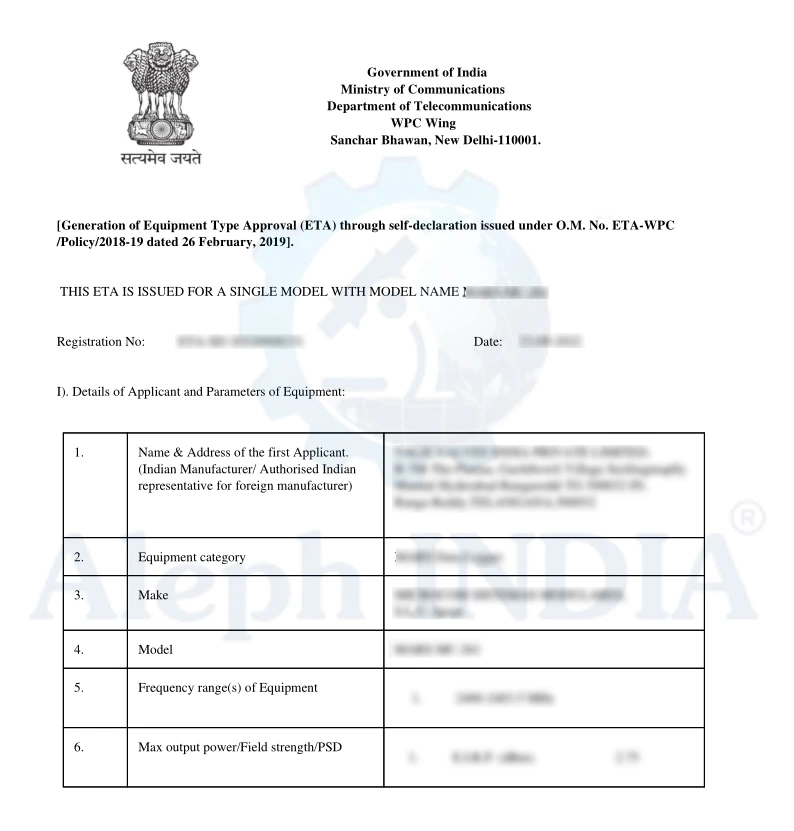
WPC Import License: A WPC license for import is required to import equipment other than the broadcasting Receiver and TVRO system. Once a WPC ETA approval has been granted to equipment, it still has to obtain an Import license if required or intended to be imported into India.
To obtain a WPC ETA certificate for de-licensed frequency band devices, a detailed test report of the equipment obtained from a well-recognized laboratory has to be submitted to WPC INDIA for evaluation. We help our clients with testing of their equipment and obtaining the test report in proper format for submission to WPC India.
BASIC REQUIREMENT FOR WPC ETA APPROVAL AND IMPORT LICENCE:
The basic requirements for WPC ETA approval are as follows:-
- For foreign manufacturers: All foreign manufacturers having no liaison office or branch office located in India have to appoint Authorized Indian Representative (AIR).
- If the manufacturer has the liaison office/branch office in India, then they will become the AIR.
- For import license, a foreign manufacturer needs to appoint AIR, which should be the same as in the WPC ETA application.
- For domestic manufacturers: The domestic manufacturer can directly apply for WPC ETA license ETA and WPC import license without nominating AIR.
Documents Required for WPC Licence/ ETA CERTIFICATE
The following documents are required for WPC ETA approval:
- Copy of company registration
- Copy of company GST registration
- ID and address proof of authorized person
- Radiofrequency test report from IS0 17025 accredited foreign lab or any NABL accredited Indian Lab
- Letter of Authorization
- Product technical details
- IEC in case of import
- A Purchase order in case of import
- Receipt of online fee
- Test report (CE/RoHS/ASTM/EN)
WHAT IS RF (RADIO FREQUENCY) TEST REPORT, AND HOW TO GET RF TEST REPORT FOR WPC (ETA) CERTIFICATE?
It is really glad to see that Indian regulatory compliance authorities and WPC are closely observing every detail while rewarding and granting any license, and as we all know, to analyze any materials or product, we must head up to the laboratories to obtain the detailed reports and characteristics of it. In the case of WPC ETA licensing, the RF report plays the role.
RF testing is a method of checking the frequency of radio transmissions to ensure that they are efficiently using the spectrum. In this context, efficiency means that radio waves in the airspace do not interfere with one another.
Radiofrequency tests cover most types of broadcasts, including Wi-Fi, PMR radio, Cellular devices, and many others. Compliance with frequency standards is required by law in most areas.
For Equipment Type Approval (ETA), WPC Registration requires an RF testing report for products operating in de-license frequency bands from ILAC accredited foreign lab or NABL-accredited Indian lab.
Manufacturers and Importer need to get their products tested in NABL/ILAC accredited lab for ETA approval to import or sell their products in India. If the imported product contains multiple RF modules, then test report(s) of all RF modules without any alteration will be uploaded for WPC ETA approval.
A thorough test report of the equipment received from a well-recognized laboratory must be submitted to WPC for examination to get WPC ETA Approval for de-licensed frequency band devices.
We assist our clients with equipment testing and collecting test reports in the correct format for submission to WPC.
PROCESS OF WPC ETA (EQUIPMENT TYPE APPROVAL) CERTIFICATION
- Checking EN Standard and RF-Test Report - WPC ETA certification starts with the checking of EN Standard and frequency range in RF-Test report of the product. If frequency range falls under the mandatory devices which works under DE Licence then self-declaration certificate is issued.
- Preparing Documents - After verifying the frequency range from RF- Report, all above mentioned documents are collected accordingly.
- Online portal generation - WPC online Application must be filled on Saral sanchar portal for login credentials.
- Online Payment of Government Fee - Government fee will be paid online.
- Online/Offline submission of Documents - Applicant need to submit all required documents to WPC authority both online as well as offline for a specific type of license.
- Verification of Documents - WPC officials will verify the documents and RF test report. If the document presented are not in order, WPC officials may request for the missing document or any further information, as the case may be, for clarification purposes.
- Grant of WPC ETA Certificate - If WPC officials will get satisfied with the documents and test report of the product then Equipment type approval Certificate (WPC certificate) will be granted.
PRODUCTS UNDER WPC
PRODUCT SCOPE
Mandatory requirements for all wireless products (transceivers, transmitters and receivers) entering the Indian market.
Note: only receivers do not need approval, for example GPS products.
Product examples: Wireless Bluetooth-Watches, Wireless Water Heaters, Wireless Home Appliances, Wireless Car Radio, Radio Frequency Identification (RFID) tags and readers, Wireless Medical products used for patient profiling, Laptops, Mobile Phones, Wireless Mouse and Keyboard, Remote Key for entry, Wireless Headphones and/or Earplugs, Wireless Music Players, and any other Radio Frequency Modules.
De-licenced Frequency Band
As per WPC wing notification, the wireless equipment must be built and constructed in such a way that the emission bandwidth and other parameters are within the specified limit, and the equipment must be type approved. The application for obtaining equipment type approval (WPC ETA Approval) shall be made to the central government in prescribed format.
The following specified limit equipment shall be type approved.
| S.No. | GSR No. | GSR Date | Frequency Band | Megnetic Field Strength Limit | Spectrum access and mitigation requirements | Purpose/ Applications | Remarks | EN No. |
|---|---|---|---|---|---|---|---|---|
| 1 | GSR 870(E) | 21.12.2021 | 9-90 kHz | 72 dBμA/m at 10m distance | No requirement | Use of Very Low Power Radio Frequency Devices or Equipments for Inductive Applications | - | EN 300 330 |
| 2 | GSR 870(E) | 21.12.2021 | 90-119 kHz | 42 dBμA/m at 10m distance | No requirement | Use of Very Low Power Radio Frequency Devices or Equipments for Inductive Applications | - | EN 300 330 |
| 3 | GSR 870(E) | 21.12.2021 | 119-135 kHz | 66 dBμA/m at 10m distance | No requirement | Use of Very Low Power Radio Frequency Devices or Equipments for Inductive Applications | - | EN 300 330 |
| 4 | GSR 870(E) | 21.12.2021 | 135-140 kHz | 42 dBμA/m at 10m distance | No requirement | Use of Very Low Power Radio Frequency Devices or Equipments for Inductive Applications | - | EN 300 330 |
| 5 | GSR 870(E) | 21.12.2021 | 140-148.5 kHz | 37.7 dBμA/m at 10m distance | No requirement | Use of Very Low Power Radio Frequency Devices or Equipments for Inductive Applications | - | EN 300 330 |
| 6 | GSR 870(E) | 21.12.2021 | 3155-3400 kHz | 13.5 dBμA/m at 10m distance | No requirement | Use of Very Low Power Radio Frequency Devices or Equipments for Inductive Applications | - | EN 300 330 |
| 7 | GSR 870(E) | 21.12.2021 | 148.5-5000 kHz except the sub-band metion at S.No 6 above | -15 dBμA/m (H-field Strength) at 10m distance | No requirement | Use of Very Low Power Radio Frequency Devices or Equipments for Inductive Applications | In case of external antennas only loop coil antennas may be employed. The maximum magnetic field strength is specified in a bandwidth of 10 kHz. The maximum allowed total magnetic field strength is -5 dBμA/m at 10m for system operation at bandwidths larger than 10 kHz whilst keeping the density limit (-15dBμA/m in a bandwidth of 10 kHz) | EN 300 330 |
| 8 | GSR 870(E) | 21.12.2021 | 7400-8800 kHz | 9 dBμA/m at 10m distance | No requirement | Use of Very Low Power Radio Frequency Devices or Equipments for Inductive Applications | - | EN 300 330 |
| 9 | GSR 870(E) | 21.12.2021 | 10200-11000 kHz | 9 dBμA/m at 10m distance | No requirement | Use of Very Low Power Radio Frequency Devices or Equipments for Inductive Applications | - | EN 300 330 |
| 10 | GSR 870(E) | 21.12.2021 | 5000-30000 kHz except the sub bands mentaioned at S.No. 8, 9 and 6765-6795 kHz | -20 dBμA/m at 10m distance | No requirement | Use of Very Low Power Radio Frequency Devices or Equipments for Inductive Applications | In case of external antennas only loop coil antennas may be employed. The maximum magnetic field strength is specified in a bandwidth of 10 kHz. The maximum allowed total magnetic field strength is -5 dBμA/m at 10m for system operation at bandwidths larger than 10 kHz whilst keeping the density limit (-20 dBμA/m in a bandwidth of 10 kHz) | EN 300 330 |
| 11 | GSR 1047(E) | 18.10.2018 | 6765-6795 kHz | 42 dBμA/m at 10 meters | - | Use of Low Power and Very Low Power Short Radio Frequency Devices for Inductive Application | - | EN 300 330 |
| 12 | GSR 696(E) | 16.09.2015 | 36-38 MHz | 50m W, maximum audio channel bandwidth of 200 kHz | - | Use of Very Low Power Radio Frequency Devices or Equipments for wireless microphones | - | - |
| 13 | GSR 1047(E) | 18.10.2018 | 30-37.5 MHz | 1 mW e.r.p | - | This set of usage conditions is only available to ultra-low power medical membrane implants for blood pressure measurements within the definition of active implantable medical devices in Directive 90/385/EEC. | Duty cycle limit: 10% | EN 302 510 |
| 14 | GSR 1047(E) | 18.10.2018 | 87.5-108 MHz | 50 nW e.r.p | - | Use of Low Power and Very Low Power Short Range Radio Frequency Devices in High duty cycle | - | EN 301 357 |
| 15 | GSR 1047(E) | 18.10.2018 | 169.4-169.475 MHz | 500 mW e.r.p | - | Use of low power and very low power short range devices Non-Specific Short Range Device |
Channel spacing: max 50 kHz. Duty cycle limit: 1.0%. For Metering devices, the duty cycle limit is 10.0% | EN 300 220 |
| 16 | GSR 1047(E) | 18.10.2018 | 169.4-169.4875 MHz | 10 mW e.r.p | - | Use of low power and very low power short range devices Non-Specific Short Range Device |
Duty cycle limit is 0.1% | EN 300 220 |
| 17 | GSR 1047(E) | 18.10.2018 | 169.4875-169.5875 MHz | 10 mW e.r.p | - | Use of low power and very low power short range devices Non-Specific Short Range Device |
Duty cycle limit is 0.001% | EN 300 220 |
| 18 | GSR 1047(E) | 18.10.2018 | 169.5875-169.8125 MHz | 10 mW e.r.p | - | Use of low power and very low power short range devices Non-Specific Short Range Device |
Duty cycle limit: 0.1% | EN 300 220 |
| 19 | GSR 1047(E) | 18.10.2018 | 169.4-169.475 MHz | 500 mW e.r.p | - | Use of low power and very low power short range devices as Assistive listening device | Channel spacing: less than 50 kHz | EN 300 422 |
| 20 | GSR 1047(E) | 18.10.2018 | 169.4875-169.5875 MHz | 500 mW e.r.p | - | Use of low power and very low power short range devices as Assistive listening device | Channel spacing: max 50 kHz | EN 300 422 |
| 21 | GSR 532(E) | 12.08.2005 | 335.7125 MHz, 335.7375 MHz, 335.7625 MHz, 335.7875 MHz, 335.8125 MHz, 335.8375 MHz | 1m W | - | Use of low power equipment in the 335 MHz band for remote control of cranes | Emission - 10K0FID, Inbuilt Antenna | - |
| 22 | GSR 1047(E) | 18.10.2018 | 401-402 MHz | 25 ?W e.r.p | - | This set of usage conditions is only available for systems specifically designed for the purpose of providing non-voice digital communications between active implantable medical devices and/or body worm devices and other devices external to the human body used for transferring non-time-critical individual patient related physiological information. | Channel spacing: 25 kHz. Individual transmitters may combine adjacent channels for increased bandwidth up to 100 kHz. Alternatively, a duty cycle limit of 0.1% may also be used. | EN 302 537 |
| 23 | GSR 673(E) | 23.09.2008 | 402-405 MHz | 25?W e.r.p, with channel emission bandwidth within 300KHz | - | Use of very power remote cardiac monitoring radio frequency wireless medical devices, medical implant communication systems (MICS) or medical implant Telemetry systems and other such very low power medical radio frequency wireless devices | Built in Antenna | - |
| 24 | GSR 1047(E) | 18.10.2018 | 405-406 MHz | 25 ?W e.r.p | - | This set of usage conditions is only available for systems specifically designed for the purpose of providing non-voice digital communications between active implantable medical devices and/or body worm devices and other devices external to the human body used for transferring non-time-critical individual patient related physiological information. | channel spacing: 25 kHz. Individual transmitters may combine adjacent channels for increased bandwidth up to 100 kHz. Alternatively, a duty cycle limit of 0.1% may also be used. | EN 302 537 |
| 25 | GSR 680(E) | 12.09.2012 | 433-434 MHz | 10 mW with a channel bandwidth within 10 kHz | - | use of very low power devices or equipment for indoor application | Built in only | - |
| 26 | GSR 698(E) | 16.09.2015 | 433-434.79 MHz | 10 mW e.r.p with maximum channel bandwidth of 10 kHz | - | Use of very low power radio frequency devices or equipment including Radio Frequency Identification Devices | Duty cycle limit 10% | - |
| 27 | GSR 1047(E) | 18.10.2018 | 446.0-446.2MHz | 500 mW e.r.p | - | Use of low power and very low power short range radio frequency device for Personal Mobile radio 446 MHz device | Channel spacing: 6.25 kHz and 12.5 kHz | EN 300 113-2,EN 301 166-2,EN 300 296-2 |
| 28 | GSR 564 (E) | 30.07.2008 | 865-867 MHz | 1 W transmitter power, 4 W e.r.p and 200 kHz carrier bandwidth | - | Use of Low Power equipment in frequency band 865-867 MHz for Radio Frequency Identification Devices(RFID) | - | - |
| 29 | GSR 1047(E) | 18.10.2018 | 2400-2483.5 MHz | 25 mW e.i.r.p | - | Use of very low power and very low power short range radio frequency devices for Radio determination device | - | EN 300 440 |
| 30 | GSR 1047(E) | 18.10.2018 | 2400-2483.5 MHz | 10 mW e.i.r.p | - | Use of low power and very low power short range radio frequency device for Non-Specific Short Range Device | EN 300 440 | |
| 31 | GSR 1047(E) | 18.10.2018 | 2446-2454 MHz | 500 mW e.i.r.p | - | Use of low power and very low power short range radio frequency device for Radio frequency identification device | EN 300 440 | |
| 32 | GSR 1047(E) | 18.10.2018 | 2483.5-2500 MHz | 10 mW e.i.r.p | - | Use of low power and very low power short range radio frequency devices- Active medical implant Device | Channel spacing 1 MHz , The whole frequency band may also be used dynamically as a single channel for high speed data transmissions. Duty cycle limit:10% | EN 301 559 |
| 33 | GSR 1048(E) | 18.10.2018 | 5150-5250 MHz,5250-5350 MHz, 5470-5725 MHz | 26 dB emission bandwidth | - | Use of wireless Access System Including Radio Local Area Network in 5GHz | - | - |
| 34 | GSR 1047(E) | 18.10.2018 | 5725-5875 MHz | 25 mW e.i.r.p | - | Use of low power and very low power short range radio frequency device-Non-Specific Short Range Device | - | EN 300 440 |
| 35 | GSR 1047(E) | 18.10.2018 | 24.05-24.075 GHz | 100 mW e.i.r.p | - | Use of low power and very low power short range radio frequency devices-Transport and traffic telematics device | - | EN 302 858 |
| 36 | GSR 1047(E) | 18.10.2018 | 24.075-24.15 GHz | 100 mW e.i.r.p | - | Use of low power and very low power short range radio frequency devices- Transport and traffic telematics device. This set of usage conditions is only available to ground based vehicle radars. | - | EN 302 858-1 V 1.2.1 |
| 37 | GSR 1047(E) | 18.10.2018 | 24.075-24.15 GHz | 0.1 mW e.i.r.p | - | Use of low power and very low power short range radio frequency devices- Transport and traffic telematics device. | - | EN 302 858 |
| 38 | GSR 1047(E) | 18.10.2018 | 24.15-24.25 GHz | 100 mW e.i.r.p | - | Use of low power and very low power short range radio frequency devices- Transport and traffic telematics device. | - | EN 302 858 |
| 39 | GSR 1047(E) | 18.10.2018 | 24.25-24.495 GHz | -11 dBm e.i.r.p | - | Use of low power and very low power short range radio frequency devices- Transport and traffic telematics device. This set of usage conditions is only available to ground based vehicle radars. | Duty cycle limits and frequency modulation ranges apply as specified in EN 302 858-1 v1.3.1 | EN 302 858 |
| 40 | GSR 1047(E) | 18.10.2018 | 24.25-24.5 GHz | 20 dBm e.i.r.p (forward facing radars), 16 dBm e.i.r.p. (rear facing radars) | - | Use of low power and very low power short range radio frequency devices- Transport and traffic telematics device. | Duty cycle limits and frequency modulation ranges apply as specified in EN 302 858-1 v1.3.1 | EN 302 858 |
| 41 | GSR 1047(E) | 18.10.2018 | 24.495-24.5 GHz | -8 dBm e.i.r.p | - | Use of low power and very low power short range radio frequency devices- Transport and traffic telematics device. | Duty cycle limits and frequency modulation ranges apply as specified in EN 302 858-1 v1.3.1 | EN 302 858 |
| 42 | GSR 1047(E) | 18.10.2018 | 24.15-24.25 GHz | 100 mW e.i.r.p | - | Use of low power and very low power short range radio frequency devices-Non-Specific Short Range Device | - | EN 300 440 |
| 43 | GSR 1047(E) | 18.10.2018 | 61-61.5 GHz | 100 mW e.i.r.p | - | Use of low power and very low power short range radio frequency devices-Non-Specific Short Range Device | - | EN 305 550 |
| 44 | GSR 699(E) | 16.09.2015 | 76-77 GHz | 5 W (37 dBm) | - | Use of very low power radio frequency devices or equipment for Short Range Radar System | - | - |
| 45 | GSR 1046(E) | 18.10.2018 | Frequency range 1)1.6 GHz to 10.6 GHz and 2) above 10.6 GHz frequency band | - | - | Use of very low power Ultra wide band device such as 1) Generic ultra wideband device usage, 2) Location Tracking system, 3) Ultra wideband device installed in road and rail vehicle, 4) Material sensing device using wideband technology, 5) Building material analysis device | - | EN 302 065-1,EN302 065-2,EN302 065-3 |
HOW TO GET WPC ETA APPROVAL IN INDIA?
To obtain an WPC certificate/ETA for de-licensed frequency band devices, a detailed test report of the equipment obtained from a well-recognized laboratory has to be submitted to WPC for evaluation. We help our clients with testing their equipment and obtaining the test report in the proper format for submission to WPC.
Aleph India has extensive experience in providing WPC (ETA) Approval for IT and Electronic devices to both domestic and international businesses. By obtaining a WPC certificate and an import license, we assist Indian and global firms in releasing their products in the Indian market.
We are one of the leading WPC consultants in Delhi. To get a complete idea about WPC ETA approval and hustle-free business, contact Aleph India. We assist the client to get all types of certification and license under the various scheme of the government of India. Our technical team will guide you through every stage of the process and ensure that your business runs smoothly.
frequently asked questions (FAQ)
- Radio Frequency' (RF) Test Report is required in soft copy from any NABL accredited Indian lab or ISO 17025 accredited foreign lab.
- Filing of application for obtaining equipment type approval shall be made to the Wireless Adviser to Govt. of India. Preparation and Submission of required documents along with a complete copy of the Radio Test report (RF test report) carried out on the product from an accredited test laboratory.
- Documents of Product's Technical Details: Describing technical information about a product, such as a user manual etc.
The Wireless Planning & Coordination Wing (WPC) is a Wing of Department of Telecommunications coming under the Ministry of Communications of the Government of India. The department is responsible for issuing amateur radio licenses, allotting the frequency spectrum and monitoring the frequency spectrum.
Equipment Type Approval (ETA) is an approval that has to be obtained from WPC before importing any wireless device in India which functions in the de-licensed frequency band. Such equipment includes products like Bluetooth devices, Mobile phones, Wi-Fi Technology, RFID and others.
Filing of application for obtaining equipment type approval shall be made to the Wireless Adviser to Govt. of India. Preparation and Submission of required documents along with a complete copy of the Radio Test report (RF test report) carried out on the product from an accredited test laboratory.
To obtain an ETA for de-licensed frequency band devices, a detailed test report of the equipment obtained from a well-recognized laboratory has to be submitted to WPC for evaluation. To check your wpc licence application status visit saralsanchar.gov.in, click on the application status link. Login through your credentials and your application status will be visible.
A Dealer Possession License (DPL) is issued to the prospective dealers and distributors of wireless products. DPL forbids people and companies from possessing, transferring or selling any wireless devices or similar telegraphy apparatus to any other person or organization also not holding a valid license.
These are the following products:
Required Documents
ETA through self-declaration is applicable to the products which comply with both the following conditions, i.e., i) (exempted from import licensing requirement as per Import Policy of DGFT and; )ii (working in de-licensed frequency band)s (as per applicable Gazette Notifications from Ministry of Communications. For example: - Mobile handsets, Smartphone's, Electronic notepads, Laptops, Smartwatches, SRDs including accessories, microphones, headphones, speakers, earphones, printers, scanners, mouse, keyboard, TV, camera, etc.
Such category of products may be imported by submitting an undertaking to the Customs along with ETA certificate, both generated/downloaded through the portal saralsanchar.gov.in.
For such products (for example drones/RPAs), issuance of ETA through RLOs of WPC Wing shall continue. Apply online for ETA through the routine procedure to concerned RLOs and obtain ETA for it.
For obtaining ETA, a fee of Rs 10,000/- is required to be paid for each product having inbuilt one or more RF module(s). The product may be a finished model or RF module
The RF test report issued by Accredited Laboratory for the product is required for the issuance of ETA. In case the imported product contains multiple RF modules, then test report(s) of all RF modules without any alteration to be uploaded.
Yes, if it satisfies both the following conditions, i.e., (i) exempted from import licensing requirement as per Import Policy of DGFT and; (ii) working in de-licensed frequency band)s (as per applicable Gazette Notifications from Ministry of Communications.
Payment of Rs 10,000/- is to be made through BharatKosh (NTRP) Portal under 'Equipment Type Approval (ETA)? to 077188-CCA PAO, Headquarters. While making payment, it is advised to enter the name of the product and Model Number under the 'Remark' column.
A product operating in the licensed exempt band(s) should have equipment type approval (ETA). In the cases when the product is manufactured in India and RF module(s) having ETA is/are fitted in it without any modification/alteration, then no separate ETA is required for such finished product. However, if the product(s) are manufactured outside India, then ETA is required for each product before its import.
The validity of the Equipment Type Approval (ETA) license remains valid as long as the product model continues being manufactured without any alteration and modification. In such a case, no renewal is required.
Such items may be imported by submitting
a copy of the existing ETA along with a signed undertaking clearly stating
that:-
i. the product contains RF module(s) operating in de-licenced frequency
bands only and;
ii. the product is exempted from import licence requirement as per the
Import policy of DGFT.
Once an ETA is issued for a product either through Self-Declaration or through RLO, it can be used subsequently by other persons for the purpose of import without any additional payment.
The frequency band would be applicable to a particular domain that has two forms of indicators. The indicators would be the lower domain and the higher domain. Frequency bands are commonly used terms when it comes to radio frequency and other forms of devices. A frequency chart is a specific form of a chart showing frequency bands for a different type of wireless product. For example, if the product is a specific frequency band, then it would be categorised as a low power device. 50-200 KHz are classified and categorised as low-frequency bands. However, 5825 Mhz - 5875 Mhz would be categorised as high-frequency bands.
The applicant has to ensure that the technical specifications meet specific requirements. Apart from this, the frequency band and model number have to be specified. The device has to be wireless which is present in a de-listed frequency.
Yes, BIS Approved product also need WPC ETA Certificate.
BIS REGISTRATION FOR ELECTRONIC & IT PRODUCT
In the era of globalization, world trade is growing rapidly and henceforth, Manufacturing and Import/Export businesses are also growing drastically...View More
BIS CERTIFICATE FOR FOREIGN MANUFACTURER
The Economy of India-the fastest developing economy on the globe with the capabilities that help it matches up with the biggest international...View More
PRODUCT CERTIFICATION SCHEME (ISI MARK) FOR DOMESTIC MANUFACTURERS
Anything a person buys from food to cars, clothes to electronics, branded to unnamed products there is always a question that wanders in one’s...View More
WIRELESS PLANNING AND COORDINATION (WPC)
WPC: Wireless means communication done from one point to another point without the wires and cables. Electromagnetic waves carry the ...View More
BUREAU OF ENERGY EFFICIENCY (BEE) CERTIFICATE
BEE CERTIFICATE: Energy is the future, and its conservation is the way of the bright future. Everyone claims the environment is important...View More
E-WASTE MANAGEMENT
E-waste is one of the world's fastest-growing trash streams. We currently manufacture almost 50 million tones of it each year...View More
Request a call back.
Would you like to speak to one of our Senior Technical advisers over the phone? Just submit your details and we’ll be in touch shortly. You can also email us if you would prefer.
BIS REGISTRATION FOR ELECTRONIC & IT PRODUCT
In the era of globalization, world trade is growing rapidly and henceforth, Manufacturing and Import/Export businesses are also growing drastically...View More
BIS CERTIFICATE FOR FOREIGN MANUFACTURER
The Economy of India-the fastest developing economy on the globe with the capabilities that help it matches up with the biggest international...View More
PRODUCT CERTIFICATION SCHEME (ISI MARK) FOR DOMESTIC MANUFACTURERS
Anything a person buys from food to cars, clothes to electronics, branded to unnamed products there is always a question that wanders in one’s...View More
WIRELESS PLANNING AND COORDINATION (WPC)
WPC: Wireless means communication done from one point to another point without the wires and cables. Electromagnetic waves carry the ...View More
BUREAU OF ENERGY EFFICIENCY (BEE) CERTIFICATE
BEE CERTIFICATE: Energy is the future, and its conservation is the way of the bright future. Everyone claims the environment is important...View More
E-WASTE MANAGEMENT
E-waste is one of the world's fastest-growing trash streams. We currently manufacture almost 50 million tones of it each year...View More
View All Services
Request a call back.
Would you like to speak to one of our Senior Technical advisers over the phone? Just submit your details and we’ll be in touch shortly. You can also email us if you would prefer.


